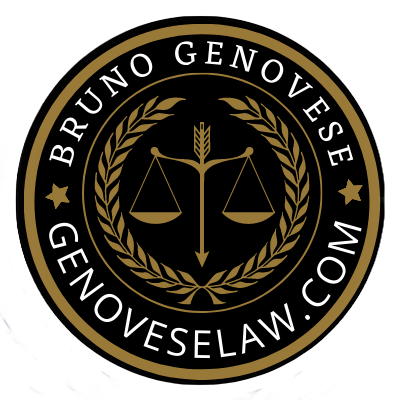Introduction
Home automation has rapidly advanced from a novelty to a mainstream technology, enhancing convenience, security, and energy efficiency in homes worldwide. However, these systems rely on extensive personal data to function—data that, under the GDPR, is highly regulated when collected from EU residents. For U.S. and Asian home automation companies operating in the EU, GDPR compliance isn’t optional. Companies must integrate stringent privacy measures to protect user data while maintaining compliance with one of the world’s most rigorous data protection frameworks.
This article explores the challenges of GDPR compliance in the home automation industry and provides actionable steps for U.S. and Asian companies to protect user privacy and manage compliance.
1. Why GDPR Compliance Is Critical in the Home Automation Sector
GDPR requires that companies handling EU residents’ personal data take proactive measures to secure it. For home automation, this responsibility is heightened due to the nature of the data involved—data that’s often detailed, sensitive, and directly tied to users’ private living spaces.
Key GDPR Privacy Concerns in Home Automation:
- Constant Data Collection: Home automation devices collect data continuously, tracking habits, routines, preferences, and even movements within a household.
- Sensitive and Personal Data Types: Devices such as security cameras, smart locks, thermostats, and voice assistants collect highly personal data that can reveal lifestyle habits, security preferences, and personal interests.
- Interconnected Ecosystems: Home automation systems often share data across devices and platforms, raising the need for secure data transfer and interoperability standards.
For U.S. and Asian companies, understanding and implementing GDPR-compliant data practices is essential—not only to avoid fines but also to build trust with privacy-conscious EU consumers.
2. Key GDPR Compliance Requirements for Home Automation Companies
Meeting GDPR standards requires home automation companies to adhere to several principles and practices, from minimizing data collection to implementing robust security measures. Here are the most critical areas to address:
A. Data Minimization: Collect Only What’s Necessary
One of GDPR’s core principles is data minimization, which mandates that companies only collect data necessary for the specific purpose of their products or services. In the context of home automation, this means companies must evaluate which data is essential for device functionality and avoid collecting unnecessary information.
Examples of Data Minimization in Home Automation:
- Motion Detectors and Cameras: Collecting motion data may be necessary for a security system, but storing continuous video footage without consent is not. Limiting data retention and clarifying data collection practices is essential.
- Smart Thermostats: Collect only temperature data and the settings required to manage the device’s functions, avoiding location data unless it’s critical for a feature like geofencing.
By limiting the data collected and stored, companies reduce GDPR compliance risks while respecting user privacy.
B. Transparency and Informed Consent: Clear and Accessible Policies
GDPR requires companies to be transparent about how they collect, use, and share personal data. For home automation companies, this means creating privacy policies that are accessible and easy to understand. Consent should be obtained for data processing that isn’t essential for device operation, such as data used for marketing or analytics.
Best Practices for Transparency and Consent:
- Privacy Policies in User-Friendly Language: Clearly explain what data is collected, why it’s collected, and how it’s used. Avoid legal jargon and include examples that help users understand the implications.
- Opt-In Mechanisms for Non-Essential Data: Obtain explicit consent for data that isn’t necessary for basic functionality, such as data sharing with third-party advertisers or analytics platforms. Opt-in options should be presented transparently during setup.
Example Implementation:
For a smart home hub that collects voice commands, provide a privacy policy accessible through the app that explains data collection, how long data is stored, and how users can delete it if desired. Offer an opt-in option for data used for analytics.
3. Implementing Security Measures to Protect User Data
Security is a fundamental component of GDPR compliance, especially given that home automation devices are often targeted by hackers. Implementing robust security measures protects both the company and the users, ensuring that data breaches are prevented or contained effectively.
A. Data Encryption for Devices and Networks
Encryption transforms data into a format that can’t be read without the correct key, making it one of the most effective ways to protect personal data. For home automation companies, data should be encrypted both in transit (as it travels across networks) and at rest (when stored in the cloud or on devices).
Best Practices for Encryption in Home Automation:
- End-to-End Encryption: Use end-to-end encryption for data transmitted between devices, apps, and servers to ensure it cannot be intercepted.
- Secure Storage of Encryption Keys: Encryption keys should be securely managed and stored separately from the encrypted data.
B. Multi-Layered Authentication and Access Control
Limiting data access to authorized users is essential. Home automation companies should implement strong authentication methods, like multi-factor authentication (MFA), to ensure that only authorized users can access or modify data.
Authentication Best Practices:
- Multi-Factor Authentication (MFA): Require MFA for users accessing sensitive settings or data through apps or web interfaces.
- Role-Based Access Controls: Implement access controls within the company to limit which employees can access specific data, reducing internal security risks.
4. Managing Data Subject Rights in the Home Automation Industry
Under GDPR, users have several rights regarding their personal data, including the right to access, correct, delete, or restrict data. Home automation companies must implement systems that allow users to exercise these rights, even if their data is spread across multiple devices and services.
How to Manage Data Subject Rights:
- Data Portability and Access Requests: Provide users with the ability to request copies of their data in a readable format. For example, users should be able to download activity logs or sensor data from a smart home device.
- Right to Deletion (“Right to be Forgotten”): Users should be able to delete data associated with their account upon request. This may require synchronization across all devices and cloud storage services to ensure that data is completely erased.
Example Implementation:
A smart security system provider should allow users to request deletion of camera footage and activity logs via an easy-to-access app feature or website form. This capability should be clearly documented in the privacy policy and accessible without extensive back-and-forth communication.
5. Incident Management and Breach Notification Protocols
Under GDPR, if a data breach occurs, companies must notify EU regulators within 72 hours if the breach poses a risk to individuals’ rights and freedoms. For home automation companies handling sensitive data, preparing for potential breaches is essential.
Steps to Ensure GDPR-Compliant Breach Response:
- Develop a Breach Response Plan: Outline procedures for detecting, managing, and notifying stakeholders about data breaches.
- Appoint a Data Protection Officer (DPO): For companies processing significant amounts of personal data, appointing a DPO who understands GDPR requirements is advisable, especially for interactions with EU regulators.
Breach Response Example:
If a breach affects data from a smart security system, the company should inform both affected users and the relevant EU data protection authorities within the 72-hour window, detailing what happened, what data was affected, and what steps are being taken to mitigate the impact.
6. Partnering with Privacy-Focused Vendors and Ensuring Compliance Across Supply Chains
Many home automation systems rely on partnerships with third-party vendors, such as cloud providers or analytics platforms. Under GDPR, companies are responsible for ensuring that all partners handling personal data also comply with GDPR requirements.
Best Practices for Vendor Management:
- Data Processing Agreements (DPAs): Require third-party vendors to sign DPAs that detail their compliance responsibilities under GDPR.
- Regular Compliance Audits: Conduct periodic audits of third-party vendors to ensure that data protection standards are upheld.
- Limit Data Transfers Outside the EU: If data must be transferred outside the EU, use GDPR-compliant mechanisms, such as Standard Contractual Clauses (SCCs).
Conclusion: GDPR Compliance as a Competitive Advantage in Home Automation
For U.S. and Asian home automation companies with an EU footprint, GDPR compliance is essential not only to avoid fines but to build trust with privacy-conscious customers. By implementing Privacy by Design, securing data, and respecting users’ rights, companies can demonstrate their commitment to protecting user privacy—an increasingly important consideration for consumers choosing home automation products.
With GDPR-compliant practices in place, home automation companies can confidently expand into the EU market, providing innovative solutions that respect user privacy and enhance user trust. In a data-driven industry, compliance isn’t just a regulatory necessity; it’s a competitive advantage that helps build a strong, privacy-respecting brand.





